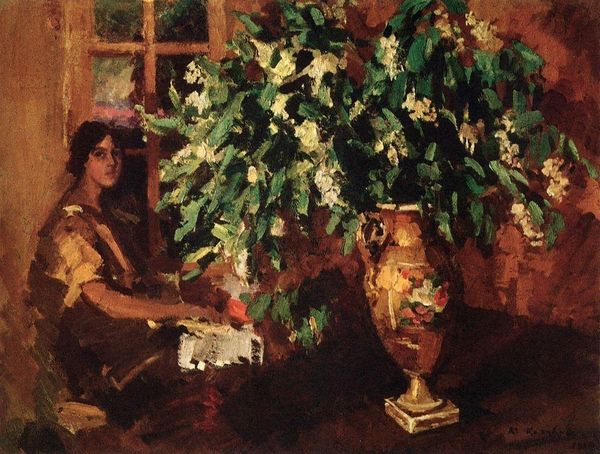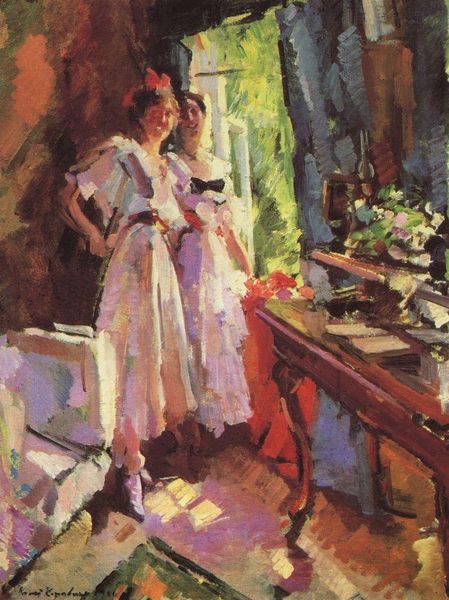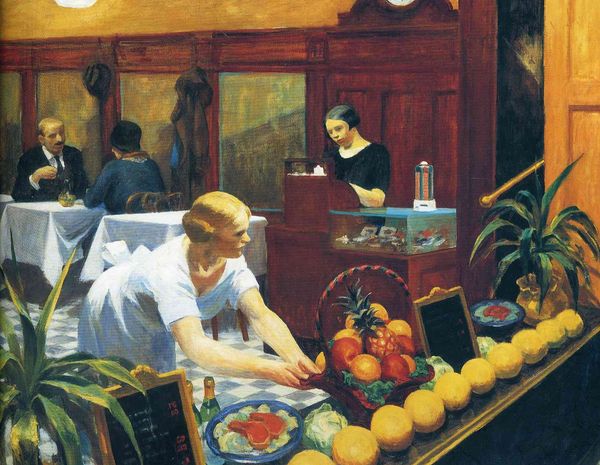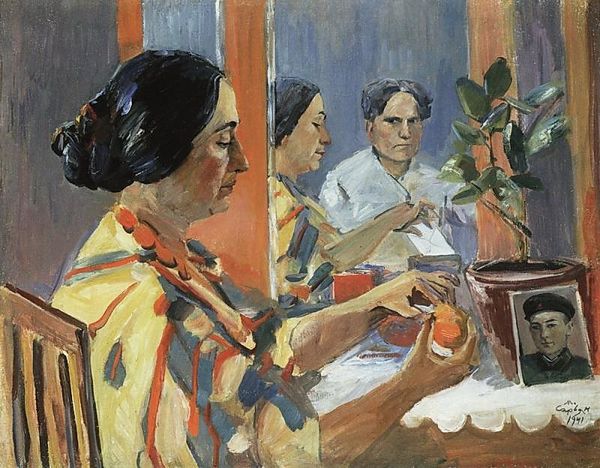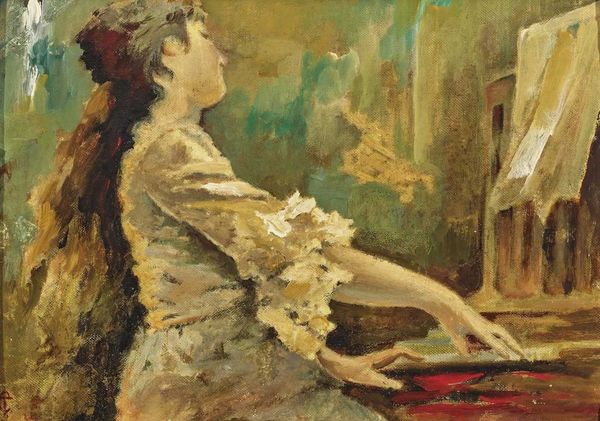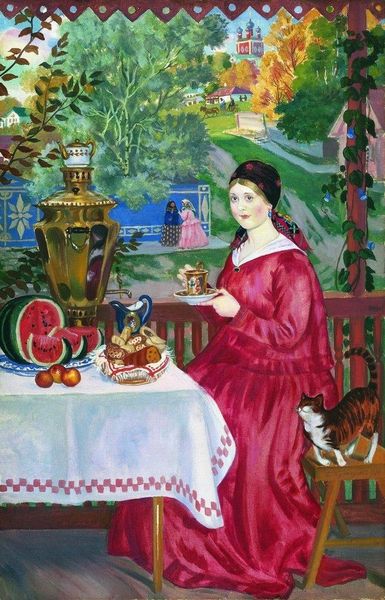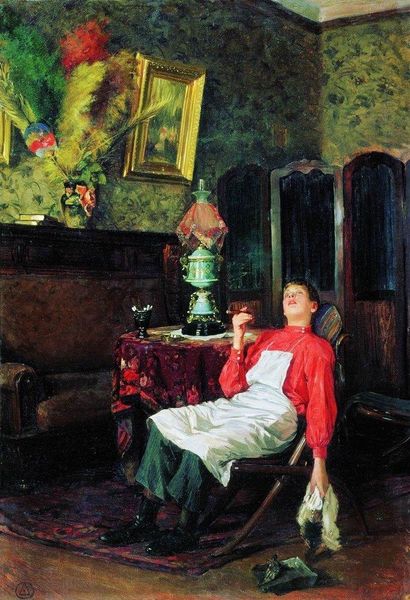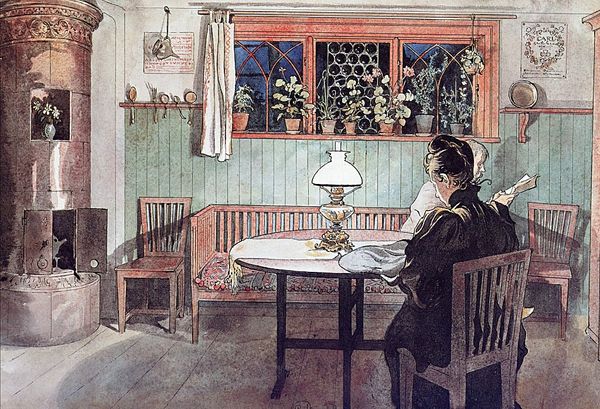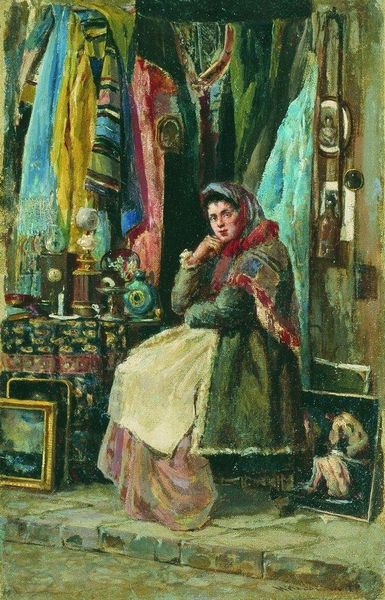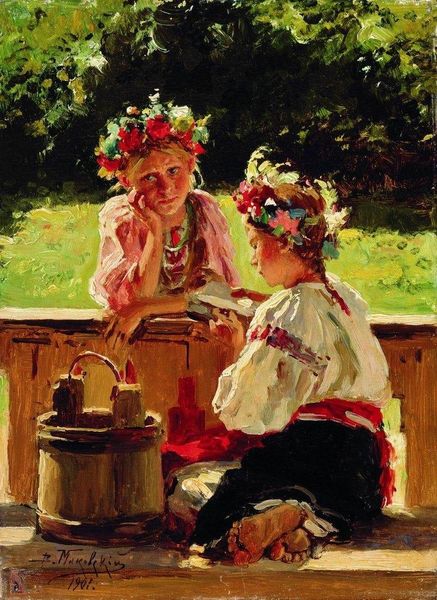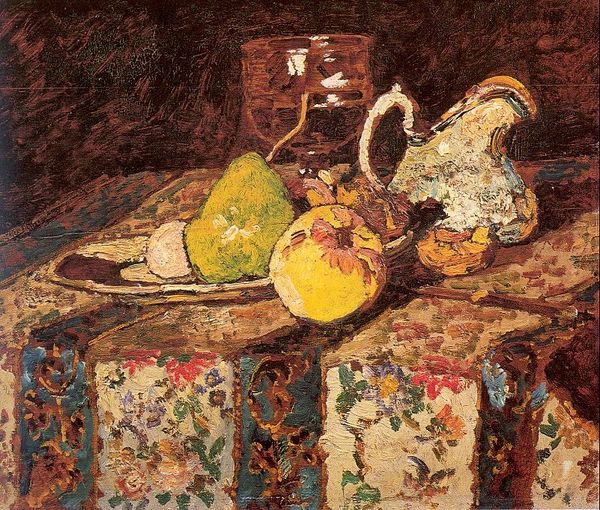
oil-paint
#
portrait
#
oil-paint
#
oil painting
#
intimism
#
genre-painting
#
portrait art
#
realism
Copyright: Martiros Sarian,Fair Use
Curator: Looking at Martiros Saryan’s "Lusik Saryan" from 1941, what immediately strikes you? Editor: There's an intimacy here, a sense of domestic tranquility—though the world outside in '41 was anything but. It's interesting how that contrast is at play, unspoken but definitely felt. Curator: Indeed. Saryan painted this portrait of his wife amidst what we might call the “intimism” genre; these pieces tend to romanticize genre paintings and family life. Take note of how Saryan makes use of oil-paint, giving the piece its rich tonality, but with visible brushstrokes that don't quite resolve into smooth, polished realism. There is certainly a tactile, almost sculptural, element in the impastoed texture. Editor: That's a crucial point— the materiality here works against the polished veneer that would mask the societal disruptions happening at the time. It reminds the viewer that there’s someone crafting this idyllic image. Is it a construction against a chaotic reality? Curator: Precisely. And beyond that, the very setting—the bookcase overflowing with cultural artifacts, the still life of fruit implying abundance—speaks to certain values. The question is, what were Saryan's intentions and the artwork’s cultural purpose during this wartime backdrop? Editor: Context is critical. Was it an intentional form of escapism aimed to instill faith and patriotism, perhaps? Saryan was held in high regard in Soviet Armenia; his position certainly had implications for how his art was viewed, understood, and eventually used as a socio-political device for positive morale. Curator: Yes. Consider, too, the role of display—this would have been exhibited, reproduced. The image of a secure, cultured home has tremendous public weight during such insecurity, offering stability for society and reinforcing political aims. It normalizes a specific ideal, maybe even propaganda in its own way, intended for wide consumption during turbulent times. Editor: So it's a painting about surface tranquility masking deeper struggles both personal and societal—or a reminder of what society wanted to retain amid war's disruptions? Looking again at the bold brushwork, you see both the maker’s hand and the artist's intention more fully now, making this so much more compelling. Curator: Absolutely. These layered readings are precisely what make "Lusik Saryan" such a rewarding experience to engage with, particularly within a historical context. The domestic setting in itself is a political statement, highlighting themes about nationhood and collective identity in this specific place and moment in time.
Comments
No comments
Be the first to comment and join the conversation on the ultimate creative platform.
